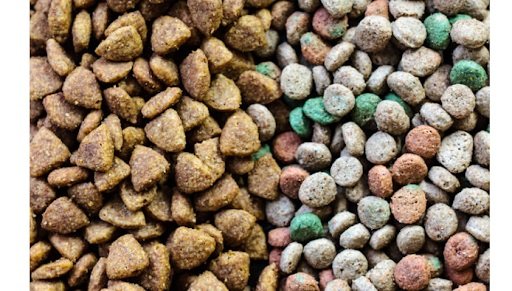In the world of pet nutrition, few topics elicit as much discussion and debate as the choice of food for our furry companions. Dry dog food, often referred to as kibble, has long been a staple in the diets of countless dogs worldwide. However, beneath its familiar facade lies a fascinating realm of complexity and variation that can leave even the most seasoned pet owner bewildered. In this article, we embark on a journey to explore the intricacies of dry dog food, delving into its history, composition, benefits, and the crucial role it plays in our pets’ lives.
A Brief Historical Perspective
The history of dry dog food dates back to the late 19th century when James Spratt, an American electrician, introduced the world to the concept of commercially produced pet food. His invention, known as “Spratt’s Patent Meat Fibrine Dog Cakes,” marked the dawn of a new era in pet nutrition. These early dog biscuits were made primarily from meat, grains, and vegetables, offering a convenient alternative to traditional homemade diets.
The Composition Puzzle
Today’s dry dog food is a far cry from Spratt’s humble creations. The modern kibble is a meticulously crafted blend of ingredients designed to provide dogs with a balanced and nutritious diet. But what exactly goes into a bag of dry dog food?
- Protein: High-quality protein sources, such as chicken, beef, or fish, serve as the foundation of dry dog food. These proteins are essential for muscle development, maintenance, and overall vitality.
- Carbohydrates: Grains like rice, corn, and barley are commonly used to provide dogs with the energy they need to lead active lives. While grains have been the subject of debate in recent years, they can be a valuable source of fiber and energy when properly included in a dog’s diet.
- Fats: Fats are vital for healthy skin and a shiny coat. They also provide a concentrated source of energy. Look for sources like chicken fat or fish oil on the ingredient list, as these contain essential fatty acids.
- Vitamins and Minerals: To ensure complete and balanced nutrition, dry dog food formulations are fortified with a range of vitamins and minerals, including vitamin A, vitamin D, calcium, and phosphorus.
- Fillers: Some lower-quality dog foods may contain fillers like soybean meal or wheat middlings, which offer limited nutritional value and can lead to allergies or digestive issues in some dogs. It’s essential to choose a product with minimal fillers.
- Preservatives: To extend shelf life, dry dog foods often contain preservatives. Natural preservatives like vitamin E (tocopherol) are preferred over artificial ones like BHA and BHT.
Benefits of Dry Dog Food
- Dental Health: One of the significant advantages of dry dog food is its abrasive texture, which can help reduce plaque and tartar buildup on your dog’s teeth, promoting better oral health.
- Convenience: Dry dog food is easy to store, has a long shelf life, and requires no refrigeration. This convenience makes it a practical choice for pet owners with busy lifestyles.
- Cost-Effective: Compared to wet or homemade diets, dry dog food is typically more budget-friendly, making it an economical option for many pet owners.
- Nutritional Consistency: Dry dog food is manufactured to meet specific nutritional standards, ensuring that your dog receives a consistent and balanced diet with each meal.
The Burstiness of Dry Dog Food: Variety is the Spice of Life
Much like the wide-ranging sentences in a well-composed essay, dry dog food also embraces the concept of burstiness. Dog food manufacturers recognize the importance of providing variety within their product lines to cater to the diverse tastes and dietary needs of dogs. Here are some ways in which burstiness manifests in the world of dry dog food:
- Flavor Profiles: Dog food brands offer an array of flavor profiles, ranging from savory chicken and beef to exotic options like venison and salmon. This diversity allows pet owners to rotate flavors and prevent their dogs from growing tired of a monotonous diet.
- Life Stages and Sizes: Burstiness extends to addressing the specific requirements of different life stages and dog sizes. Puppies, adult dogs, and seniors each have unique nutritional needs, and manufacturers tailor their products accordingly.
- Dietary Preferences: Some dogs may have allergies, sensitivities, or dietary restrictions. Manufacturers produce specialized formulas, such as grain-free, limited-ingredient, or hypoallergenic options, to accommodate these preferences.
- Wet vs. Dry: While this article primarily focuses on dry dog food, it’s essential to note that many pet owners combine both dry and wet dog food to create a burst of texture and flavor in their pets’ meals.
Conclusion
In the realm of pet nutrition, dry dog food stands as a testament to the complexity and variety that can be achieved in a seemingly simple concept. As we’ve unraveled the mysteries of dry dog food, we’ve discovered its rich history, diverse composition, and the burstiness that ensures our furry friends enjoy a range of flavors, textures, and nutritional benefits.

